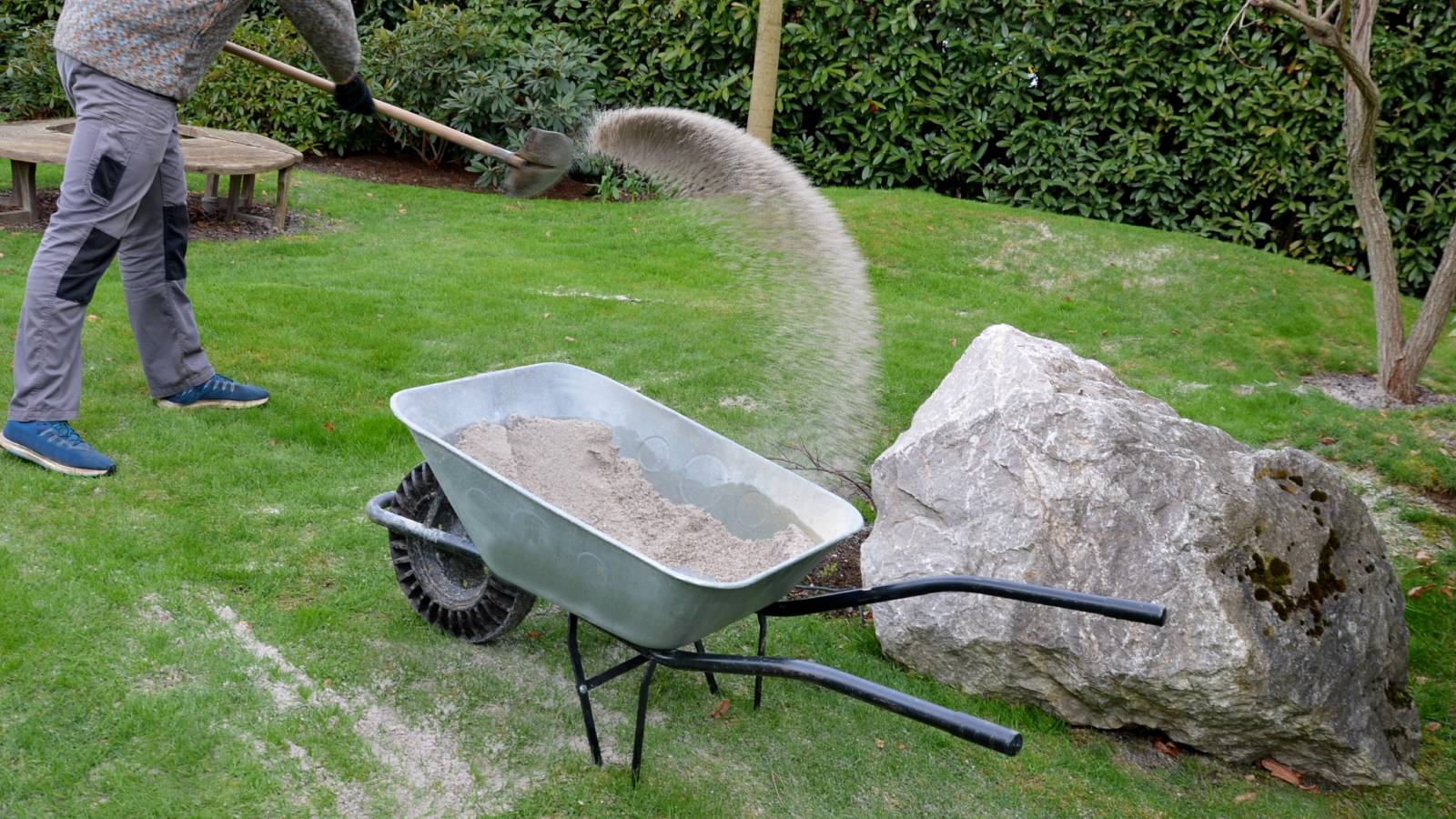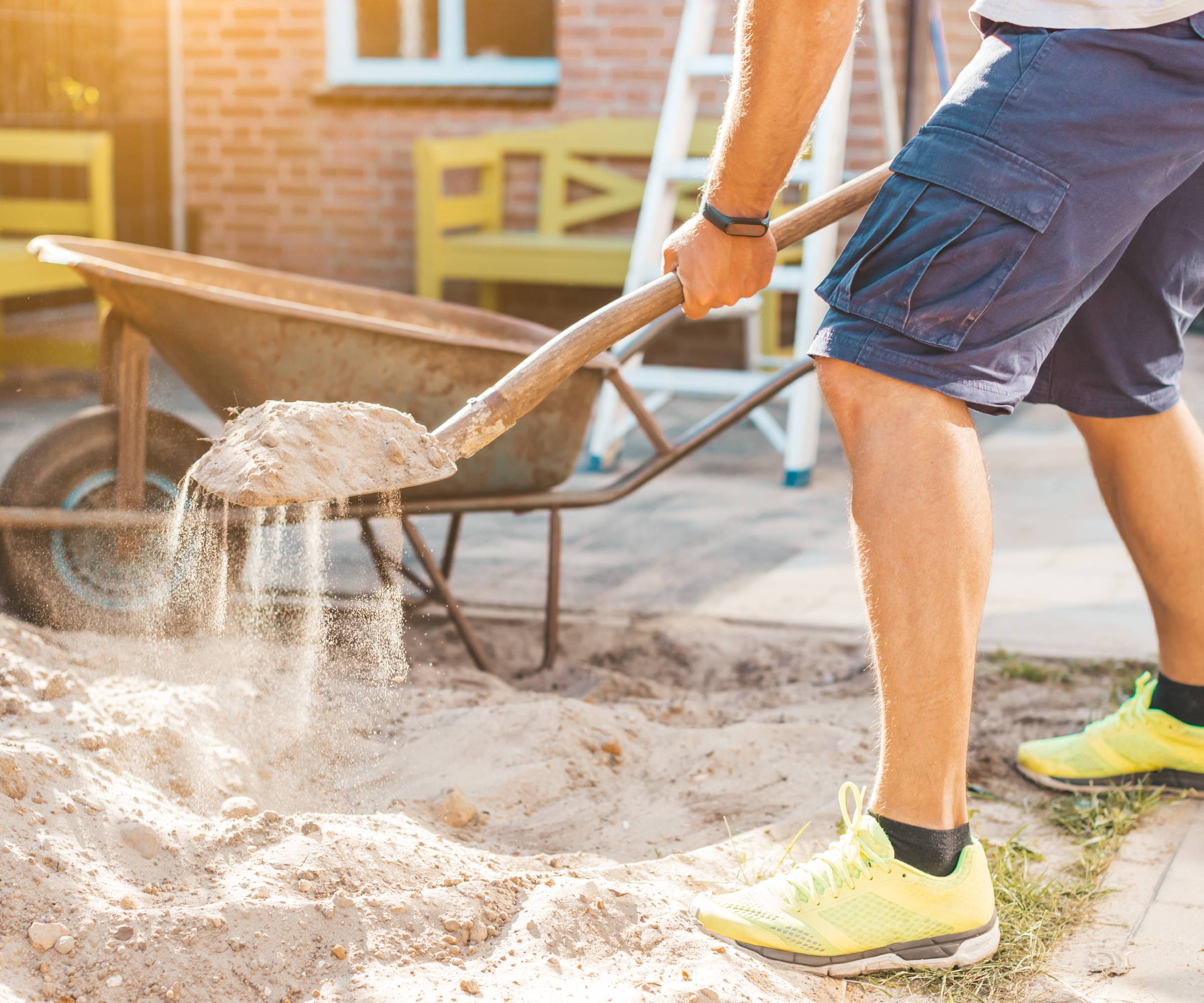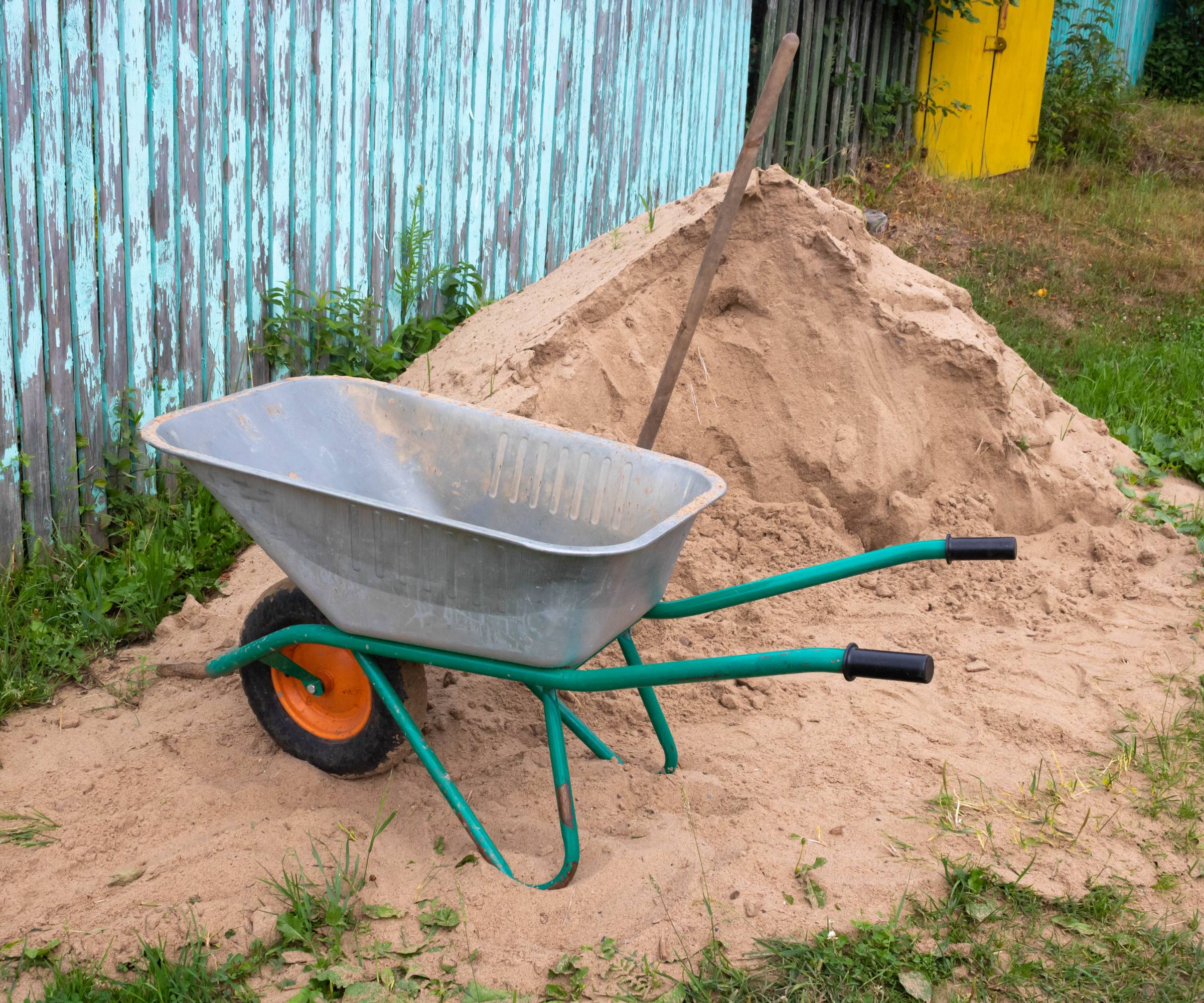Golf Course Secret: Why Experts Are Applying Sand to Grass Now
Sand may be the secret ingredient your lawn is missing. Make sure you use the right kind of sand at the right time, though, or you could be in for trouble.


Turfgrass grows better in well-draining soil than heavy soil. Most of us know that you can lighten heavy soil and improve drainage by adding sand. When should you apply lawn sand to improve drainage? The short answer is spring or fall. But the devil is in the details: you need to apply the right sand at the right time in the right way to get a positive effect.
Why Add Lawn Sand to Turfgrass?
If you live anywhere near a golf course, you’ve probably seen the gardeners putting sand on top of the grass. This is called sand topdressing, and it’s a practice increasingly used in private landscaping lawn care as well.
Why is this popular? Because adding sand improves the physical property of the soil, stopping it from getting compact and improving drainage. Sand can also even out irregularities in the topsoil, which makes the lawn easier to mow. It breaks down thatch and boosts root performance.

Sanding to Improve Drainage
Sanding is one of the top treatment choices for landscapes with heavy, clay soil. This type of soil compacts easily. Applying sand will make it more permeable, allowing water and air to get to the soil roots. If you already have a sandy soil lawn, don’t add more sand. That could create soil that is not capable of retaining nutrients or moisture.
Although it is possible to simply apply lawn sand on top of the grass, it’s more effective to aerate first. If you use a core aerator like this one from Amazon, you can poke thousands of holes in the soil over the entire area. Sand is applied after the soil is aerated, filling up the newly created holes with coarse lawn sand. Done regularly, this technique improves the physical property of your soil over time.
Pick Your Sand Carefully

I live near Pacific beaches in San Francisco, Atlantic beaches in France, so sand is not hard to come by. But while beach sand is free, it should be avoided at all costs when you are looking to sand a lawn. It contains so much salt that your lawn may die, rather than flourish. Stay away from playground sand (too fine!) and also avoid construction sand. Its high limestone content may change soil pH which can damage the lawn.
Instead, choose coarse sand (with particles sized between 0.5 to 2 millimeters) or river sand, tumbled by Mother Nature’s water action. Fine quartz sand – with a grain size of under 2 mm – is considered the best choice by many gardeners, since it is fine enough to penetrate the soil without clogging the pores. This sand from Amazon is specifically designed for lawn use.
Sign up for the Gardening Know How newsletter today and receive a free copy of our e-book "How to Grow Delicious Tomatoes".
When to Sand Your Lawn

Everyone knows that the best time for planting is early spring or fall. Well that’s also the best time for sanding, since the soil is warm and sufficiently loose that the sand can penetrate it easily.
Never sand during times of drought and heat, since the soil will be compacted. Also refrain from sanding the lawn during times of stress, like freezing winter conditions or sweltering summer temps. On the other side of the spectrum, avoid this kind of yard work during heavy rain. Pouring rain makes it hard to do anything outside, including working the sand into the soil.
So early spring or early fall it is. If you opt for spring, do it before the spring grass growth spurt begins. Whether you pick spring or fall, you’ll want to pick a clear day that isn’t too hot or too windy. If there is such a thing as an ideal day for spreading sand, it could be a nice day when rain is expected over the next few days. You can “create” this ideal condition by sanding on a nice day, then watering down the lawn if no rain materializes.
How to Sand the Yard
Even with all this information, it’s easy to make mistakes. One critical mistake to avoid is sprinkling pure sand directly on clay soil. This might happen if you are sanding the soil before installing the grass, and it can cause issues, creating a layer of soil that looks and feels like concrete.
If you blend fine sand with clay particles and water, the result is a hard, impermeable layer that resembles concrete. The clay particles wedge in between the grains of sand, plugging up the openings. This restricts drainage rather than creating it.
Instead, mix your sand with compost before you apply it to the soil. Try this Back to the Roots compost from Home Depot. Topsoil also works, or a mixture of compost and topsoil. You’ll get the improved drainage you are looking for.

Teo Spengler is a master gardener and a docent at the San Francisco Botanical Garden, where she hosts public tours. She has studied horticulture and written about nature, trees, plants, and gardening for more than two decades, following a career as an attorney and legal writer. Her extended family includes some 30 houseplants and hundreds of outdoor plants, including 250 trees, which are her main passion. Spengler currently splits her life between San Francisco and the French Basque Country, though she was raised in Alaska, giving her experience of gardening in a range of climates.